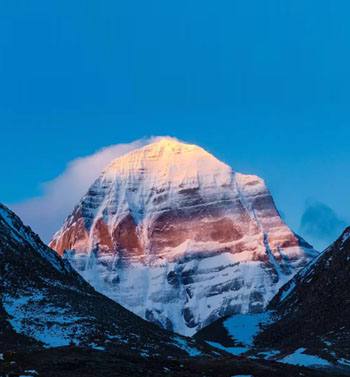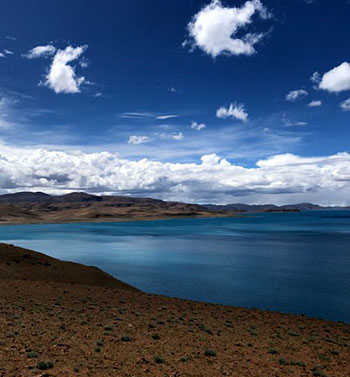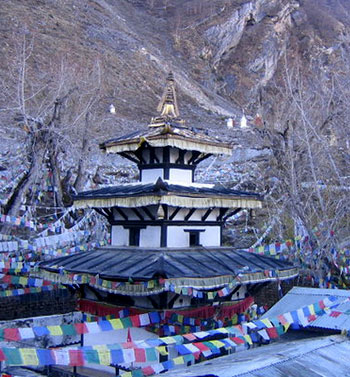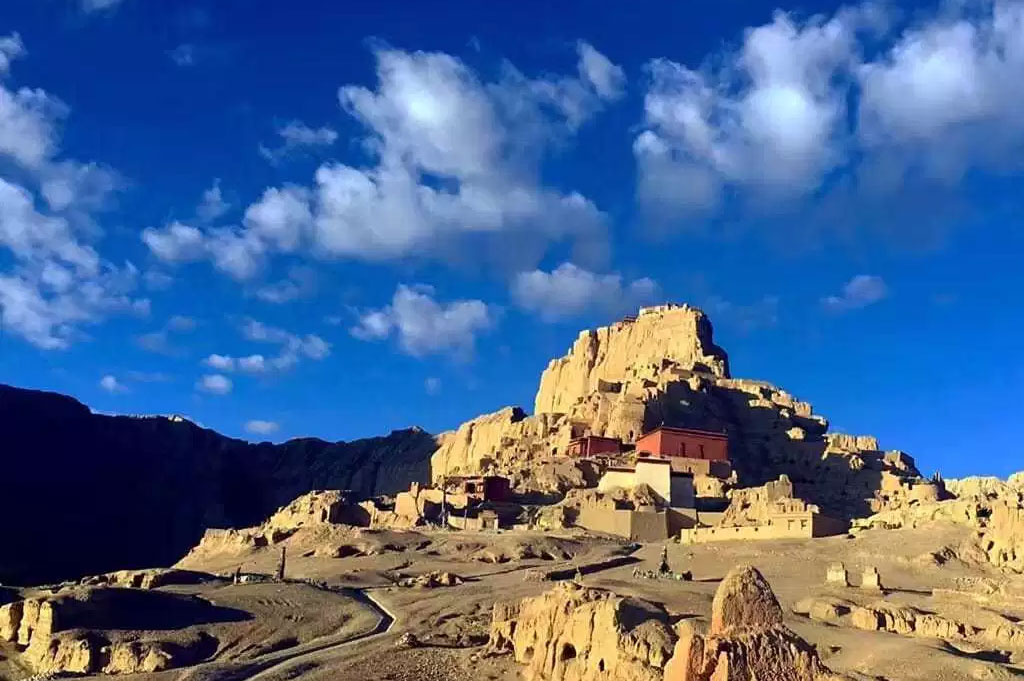Ruins of Guge Kingdom
Ruled by 16 kings accompanied with tons of army men, the hidden jewel of Tibetan history, the unexplored country .... Guge Kingdom still remains a mystery for its sudden disappearance.
Know more about the myths and legends of Tibet through the fascinating relics of Guge..
A highly mysterious country, Tibet contains some of those breathtaking historical sites which you can’t even imagine would have existed and one of these is the Guge Kingdom. It is counted amongst the most powerful kingdoms in the Tibetan history while marking its prevalence since a really long time. Standing on a very tall yellow hill that is known to be approximately 300 meter tall situated at a distance of 18 km from the Zada country, the grand empire in ruins is majorly prominent as an immensely significant cultural relic site that is still protected. It is said to have ruled the western provinces of Tibet commencing from 10th century till 17th century and as a conclusion, is continually serving as an indispensable element from the fascinating history of Tibet.
One will also witness an array of soil forests encompassing the Guge Kingdom while being perched in the Zanda County leading to the creation of a spectacular civilization but it suddenly disappeared leaving a plethora of mysteries after it. Just a drive from the Guge Kingdom for few hours and you will get the glimpses of Mount Kailash on reaching Lake Manasarovar. Showcasing the prosperity of this ancient kingdom during the bygone era are some golden relics of palaces, houses, caves as well as the monasteries which are piled up on the top of the highly elevated yellow hill. However, luckily there is the prominence of some halls and the monasteries of this kingdom which have survived and are thus, presently serving as a great source of research for the Tibetan architectures and also history.
As assumed, during the tenure of the flourishing of Guge into a massive kingdom, it served a very important role in the social, cultural as well as the economic development of the ravishing country of Tibet. It highly supported Buddhism and thus, it was witnessed that this empire used to follow the abundant principles of Buddhism and also this is a place of the ultimate formation of Buddhists’ varied forms. This gave rise to plenty philosophies which went viral all across the mighty Himalayas as a result of which many refugees were spotted from other parts of Tibet. Not only this, but the Guge Kingdom also acted as the finest trade connection of Tibet with other countries. The hill on which it is present is located on the banks of Zaborang District’s Xiangquang River that flows from the pious Lake Manasarovar in the northwest direction.
When during 9th century, Lang Dharma’s assassination was experienced, the Tobo Kingdom fell apart and as a result it led to the setting up of Guge Kingdom by the great grandson of Lang Dharma in the middle of 10th century. Later on, Jide Nyimagon 3 sons and their descendants made some efforts and finally set up three regimes namely Guge, Ladakh and also Burang. Guge’s reign has been considered as one of the fastest developed regimes and it extended over the whole of Ngari in an immensely prosperous manner. The Guge Kingdom is known as a highly mysterious part of Tibetan History as the reason behind its sudden disappearance after the war in 1679 is still unresolved. However, apart from this it is also serving as a tourists’ destination since ages and is continuing doing so.
The Guge Kingdom undoubtedly is a unique hub whether it be in regards of divinity, history or sightseeing. There are abundant highlights which antiquely describe this empire, and the two most prominent out of them are its distinct construction as well as the preserved artworks. Symbolizing a religious nation as well as peace, the construction of this kingdom is highly unparalleled and also miraculous as it comprises of three levels. Built on a mold’s top, monasteries are tucked at a higher location with the palaces spotted on the top. Also, since the environment here is totally natural with soil forests all around- the construction is an apt showcase of its bond and harmony with the environment in the wild. Despite of the kingdom being present in ruins, there are many monasteries which are unchanged till now and thus are telling the visitors about the myths and legends as well as the Buddhist history.
During its starting years when the kingdom was considered as a prosperous one, it had a population of about 100,000 people but at the time of its destruction what happened to its residents is also an unresolved mystery and this is because when the number of corpses in the caves were calculated, they came out to be far less than 100,000. Also, the natural disasters, plagues were not at all enough to prove that they were the cause of this sudden disappearance. But, on a whole the Guge Kingdom is surely to going to leave you awestruck with its historical relevance.
More Places to Visit

Mount Kailash
A winsome mystical agglomeration, a heavenly abode to Lord Shiva, an immensely esteemed pious destination ardently followed by thousands of devotees from all over the world- this is what defines the spiritual as well as..
VIEW DETAILS
Lake Mansarovar
The holiest lake of Tibet and also considered to be the world’s highest fresh-water lake, Lake Manasarovar is clipped in the far western Tibet Ngari Prefecture that is known to be ‘not so far’ from the mighty Mt Kailash.
VIEW DETAILS
Pashupatinath Temple
Pashupatinath is a Hindu temple stands in the center of the town of Deopatan, in the middle of an open courtyard on the banks of the Baghmati River, the village is 4 km far away from Kathmandu in northwest.
VIEW DETAILS
Gauri Kund
Gauri Kund, a water body that is also known as the Lake of Compassion, lies on the way while Siwasthalgoing on downwards from Dolma - La (Dolma Pass). This steep descent from Dolma Pass is a wonderful lake which is at an..
VIEW DETAILS
Tirthapuri
Next to the Sutlej River on the north bank, the Tirthapuri Hot Springs fill the infertile backdrop for this area with steam. Devotes normally visit Tirthapuri after the Kailash pilgrimage this is also considered that..
VIEW DETAILS
Om Parvat
OM Parvat is the magical and inspiring Himalayan mountain peak that rises to an altitude of Om Parvat Hindu mantra6191 m lying in the Darchula district. It is known by various names such as Adi Kailash, Chhota Kailash,
VIEW DETAILS
Lake Rakshas Taal
The lake of the Demon. Rakshas Tal is situated west of holy Manasarovar Lake near Mt Kailash. The river Sutlej originates from the north-western tip of Rakshas Tal. At the height of about 4752 meters (15,591 ft)..
VIEW DETAILS
Muktinath Temple
Located at an altitude of 3,610 meters (11,872 feet) at the base of the Thorong La mountain pass in the Mustang district, Muktinath is a highly venerated sacred place for both Hindus and Buddhists.
VIEW DETAILS
Saptarishi Caves
The Saptrishi Caves are considered to be an extreme hub in the Mount Kailash Inner Parikrama. As well these caves are counted amongst the most difficult treks experienced at the time of the Kailash Inner Kora.
VIEW DETAILS
Nandi Parvat
Nandi Parvat is considered to be one of the most vital peaks in Kailash Mansarovar Yatra and thus holds utmost significance. A visit and trek to Nandi Parvat is only possible during Kailash Inner Kora tour.
VIEW DETAILS
Guge Kingdom
A highly mysterious country, Tibet contains some of those breathtaking historical sites which you can’t even imagine would have existed and one of these is the Guge Kingdom. It is counted amongst the most powerful..
VIEW DETAILS
Jal Narayan Vishnu
The highly devoted Yatra to reach the ultimate Heavenly abode of the almighty Lord Shiva i.e. the Mount Kailash is counted amongst the most difficult terrains of all times. But, its results are undoubtedly fruitful...
VIEW DETAILS





